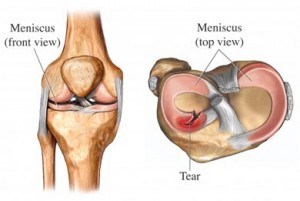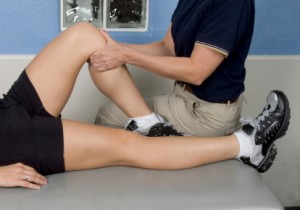 ActiveCare Physical Therapy, PC
ActiveCare Physical Therapy, PC
12 W 37th St. Ste. 1202
New York, NY 10018

What You Need to Know About a Meniscal Tear
The meniscus is a rubbery, C-shaped piece of cartilage that cushions each of your knees. Each of your knees has 2 menisci and together they act to absorb shock and stabilize the knee joint. The meniscal tear, a common injury is also known as torn cartilage in the knee. It can affect anyone—from the average individual to the elite athlete. Most people experience a meniscal tear usually when they twist or turn quickly on a bent knee, often with the foot planted on the ground.
When a person has a meniscal tear they might feel a sharp, intense pain in the knee area or even hear a “pop” or a tearing sensation. Most people with a meniscus tear have difficulty walking because of pain. Other symptoms include difficult straightening the knee or swelling within the first 24 hours of injury.
Getting a Diagnosis of a Meniscal Tear
 Your physical therapist will perform a thorough evaluation that includes a detailed review of your injury, your symptoms, and your health history. Additionally, special tests will be used to measure the range of motion in your knee and tests that apply pressure to the meniscus to determine whether it appears to be damaged. Depending on the results, your physical therapist may require further diagnostic tests—such as ultrasound or magnetic resonance imaging—or a referral to an orthopedic surgeon for consultation.
Your physical therapist will perform a thorough evaluation that includes a detailed review of your injury, your symptoms, and your health history. Additionally, special tests will be used to measure the range of motion in your knee and tests that apply pressure to the meniscus to determine whether it appears to be damaged. Depending on the results, your physical therapist may require further diagnostic tests—such as ultrasound or magnetic resonance imaging—or a referral to an orthopedic surgeon for consultation.
Pain control for a Meniscal Tear
Your physical therapist may use ice and compression to control pain and swelling. These treatments can also be used at home. Swelling is an important “guide” during your rehabilitation. An increase in swelling could indicate that you are doing too much. If you experience an increase in swelling you will need to have your program or activity level modified.
Your physical therapist may use a treatment called neuromuscular electrical stimulation (NMES) and design special exercises to maintain your strength during recovery and help restore full movement to the knee.
Treatment for a Meniscal Tear
Some patients have serious meniscal tears, or don’t respond to a course of physical therapy may require surgery. Menisectomy involves surgically removing the torn cartilage and is usually a simple procedure that requires a brief course of physical therapy treatment. Most patients are can return to their previous level of physical activity, including sports, in less than 2 months. Other options for a meniscal tear includes repair or removal.
How to Choose a Physical Therapist
Physical therapists have the education, training and experience to treat a variety of conditions or injuries. When choosing a physical therapist, consider one that is experienced in treating people with orthopedic problems and is a board-certified clinical specialist or who completed a residency or fellowship in orthopedic physical therapy.
When you’re looking for a physical therapist get recommendations from family, friends or referrals from your primary health care provider. When making an appointment, ask about the physical therapist’s experience in helping people with a meniscal tear.
Physical therapy will help you properly recover from a meniscal tear. Don’t delay getting treatment as it may cause further damage to your injury. Contact us today to schedule an appointment with the best physical therapist in NYC.
